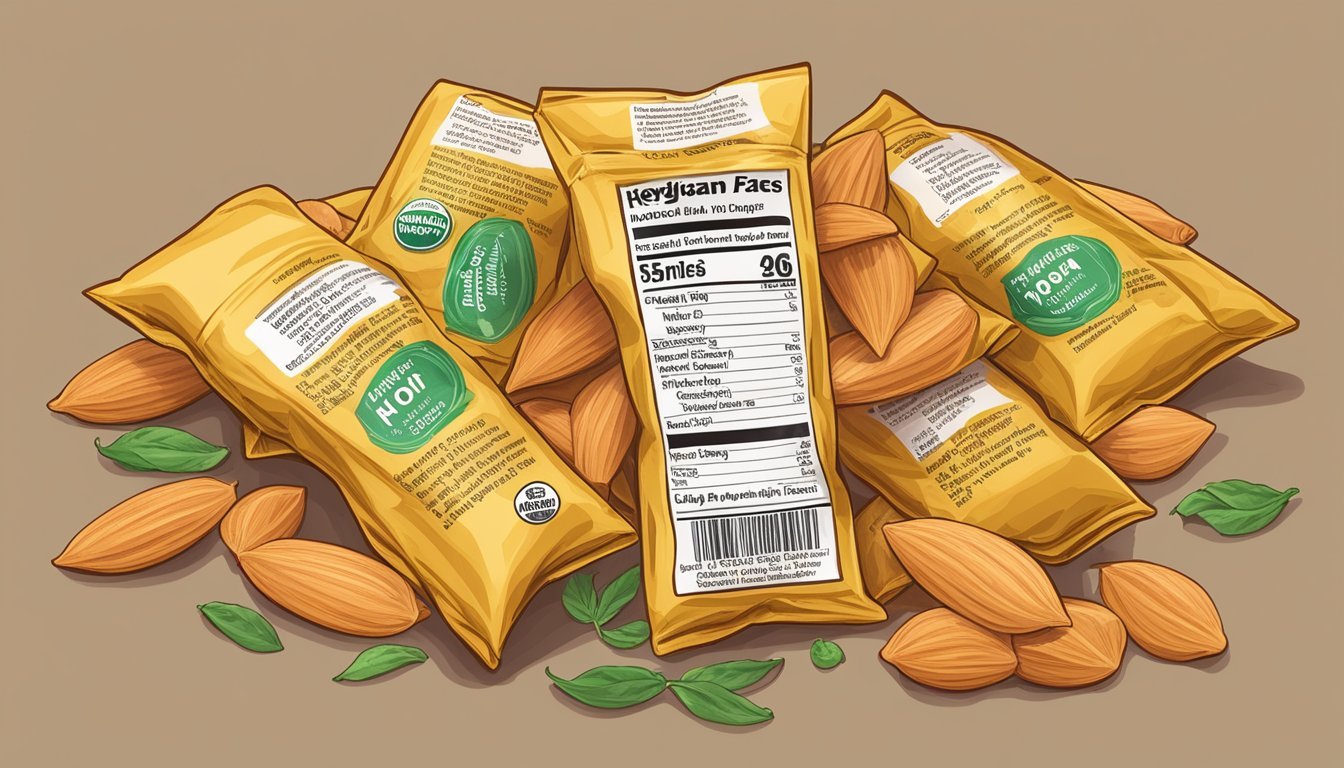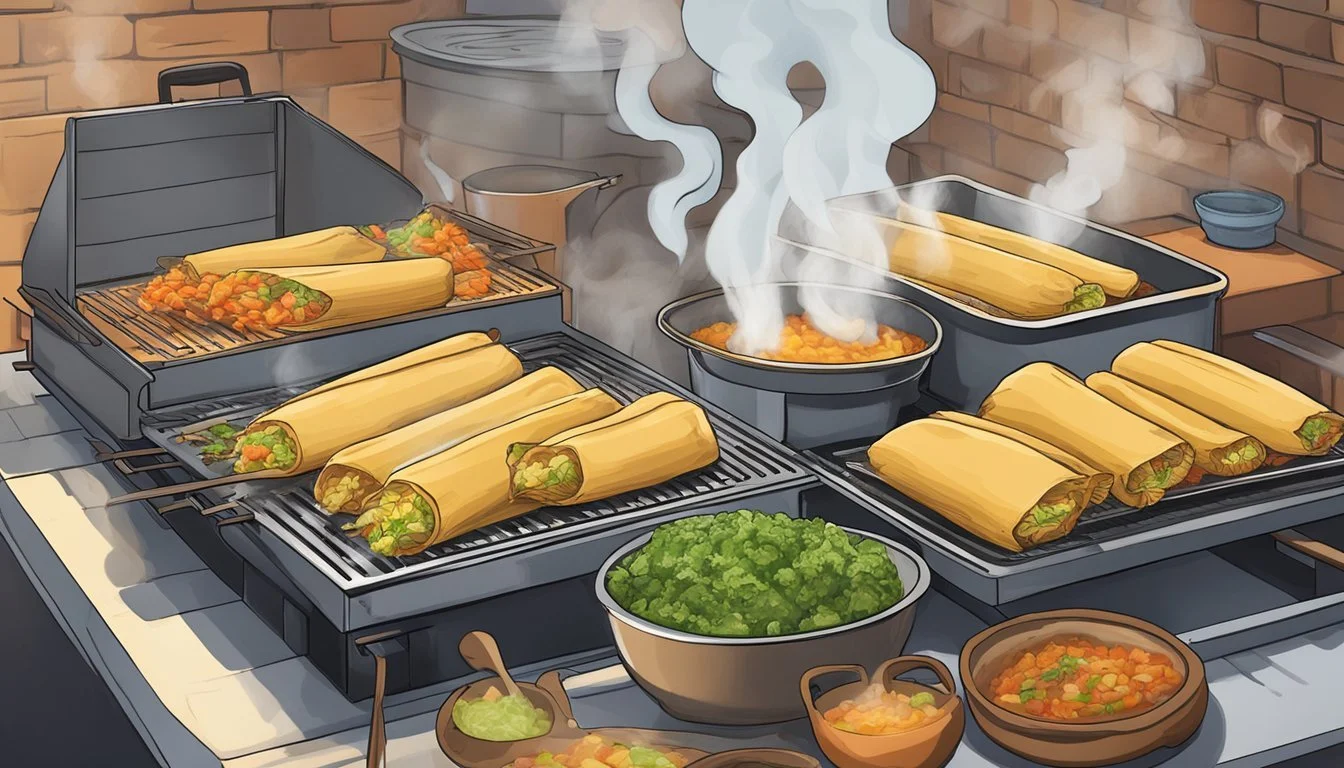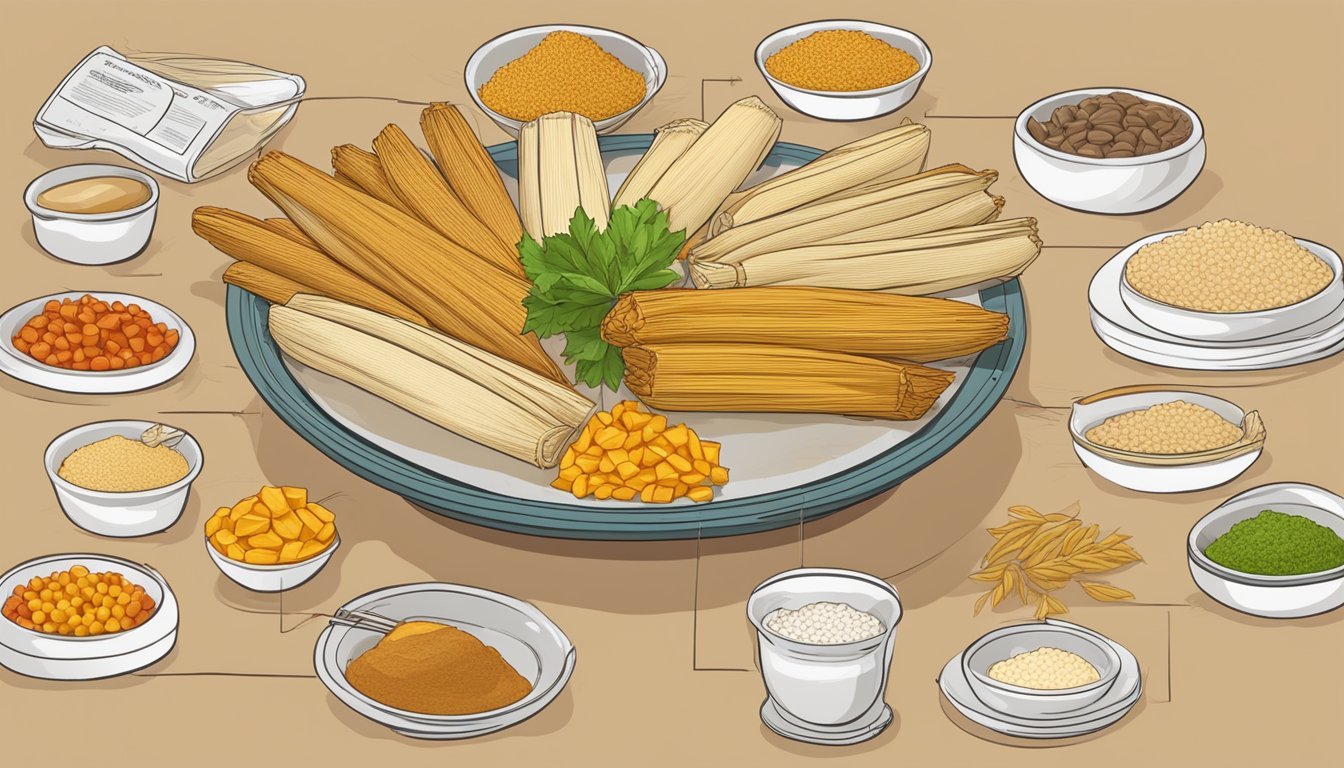Are Hot Tamales Vegan?
Understanding Their Ingredients
Navigating the vegan lifestyle necessitates a careful examination of the ingredients in each product, and candies are no exception. Hot Tamales, a popular cinnamon-flavored candy, have come under scrutiny by those following a vegan diet. The primary concern regarding their vegan status arises from certain ingredients such as confectioner's glaze, which contains shellac sourced from lac bugs, and carnauba wax, although the latter is generally accepted in vegan products.
Furthermore, key coloring agents like Red 3 and Red 40, commonly found in candies including Hot Tamales, are often tested on animals which raises ethical concerns for vegans. Another point of contention is the potential for cross-contamination with animal products such as milk and eggs during manufacturing, which although unintentional, poses a risk for strict vegans who wish to avoid any animal-derived substances in their food. As such, while some vegans may accept Hot Tamales as part of their diet, others may choose to avoid them due to the issues outlined above.
Veganism and Its Principles
Veganism is more than a diet; it embodies a philosophy that seeks to exclude all forms of exploitation and cruelty to animals for food, clothing, or any other purpose.
Definition of Veganism
Veganism is a way of living characterized by the absence of animal products. Individuals adopt veganism for various ethical, environmental, and health reasons, but the overarching principle is the same: to avoid all animal-derived products and by-products.
Dietary Restrictions for Vegans
Vegans strictly avoid consuming:
Animal flesh: No meat, poultry, fish, or seafood.
Animal-derived ingredients: This includes dairy, eggs, honey, and gelatin.
Food processed using animal products: Such as refined sugar whitened using bone char or beers clarified with isinglass from fish bladders.
Their diet includes a rich variety of plant-based foods such as:
Vegetables and fruits: All kinds are permissible and encouraged.
Legumes: Beans, lentils, chickpeas, and peas.
Nuts and seeds: Including but not limited to almonds, cashews, flaxseeds, and chia seeds.
Whole grains: Oats, barley, rice, and wheat.
Plant-based alternatives: Soy milk, almond milk, tofu, tempeh, and vegan cheeses.
To maintain a balanced diet, vegans must also consider nutritional needs such as protein, calcium, iron, and vitamin B12, often obtained from fortified foods or supplements.
Overview of Tamales
Tamales, a staple of Mexican cuisine, are known for their rich history and cultural significance. These parcels of corn masa encased in corn husks or banana leaves are not just a culinary delight but a symbol of heritage and tradition.
Historical Significance
Tamales have roots that trace back to the pre-Columbian era, making them one of the oldest dishes in Mesoamerica. The ancient Aztecs and Mayans used tamales as portable food, often taking them into battle or on long travels. The main ingredient, masa, is a dough made from nixtamalized corn, which is corn soaked in an alkaline solution to release its nutrients.
Cultural Relevance of Tamales
In Mexican culture, tamales are not merely food; they represent community and family. They are commonly prepared for special occasions, such as Dia de los Muertos (Day of the Dead) and Christmas, where the preparation is often a communal activity known as a "tamalada." The process of making tamales is labor-intensive, emphasizing the importance of gathering people together to share in the work and the meal.
Ingredients in Tamales
When discussing whether tamales are vegan, it is crucial to consider the variety of ingredients involved in their preparation. Tamales traditionally consist of a masa dough and are often wrapped in corn husks before being steamed.
Traditional Tamale Filling Choices
Traditional tamales often contain a filling of meats like chicken or pork, which are seasoned with a blend of spices and ingredients such as garlic, cumin, and chile. These fillings are encased in a starchy dough made from nixtamalized corn masa. However, for a vegan alternative, chefs can use beans, mushrooms, or vegetables like spinach and sweet potatoes instead of meat.
Meat-based fillings: commonly seasoned chicken or pork
Vegan-friendly fillings: beans, mushrooms, spinach, sweet potatoes
Common Ingredients in Tamales
The dough, known as masa, is central to a tamale's structure. The base ingredient, masa harina (nixtamalized corn flour), is mixed with water or vegetable broth, baking powder, and salt to form masa dough. An addition of olive oil can be used in place of traditional lard to keep the recipe vegan. Here is a quick overview of the ingredients often found in tamale masa:
Masa for Tamales
Ingredient Purpose Masa harina Provides the base for the dough Water/vegetable broth Adds moisture and flavor Baking powder A leavening agent to make the dough light Salt Enhances the flavor Olive oil An alternative fat to lard for a vegan version
The assembly of tamales involves spreading the masa onto corn husks, which act as a container and wrapper for the filling. The filled husks are then folded and typically steamed until the dough solidifies. The use of corn husks is a defining feature of the tamale, contributing to its texture and subtle flavor. After steaming, the husks are removed before eating.
Preparing Vegan Tamales
Preparing vegan tamales involves replacing traditional animal-based ingredients with plant-based counterparts and following a set of steps to ensure the finished product is flavorful and has the right texture. This section outlines the vegan alternatives to use and the process of making vegan tamales.
Vegan Substitutes for Traditional Ingredients
The key to successful vegan tamales is choosing the right plant-based ingredients to achieve a similar taste and texture to traditional tamales. Essential substitutes include:
Fat: Replace lard with vegetable shortening, vegan butter, or a combination of both to achieve the necessary fat content for a tender masa (dough).
Fillings: Commonly, jackfruit, refried beans, black beans, and vegan cheese make for hearty and delicious tamale fillings.
Toppings: Accessories such as guacamole, vegan sour cream, and vegan cheese can be used to enhance the flavor profile.
Steps to Make Vegan Tamales
The process of making vegan tamales can be distilled into a simple series of steps:
Hydrate the Husks: Soak dried corn husks in warm water until they become pliable, which typically takes about 30 minutes.
Prepare the Masa: In a stand mixer, whip the vegetable shortening until light, then add baking powder, salt, and masa harina to form the dough.
Assemble the Tamales: Spread masa on the corn husks, add a spoonful of the chosen vegan filling, and fold the husk around the filling, leaving one end open.
Steam the Tamales: Arrange tamales standing upright in a steamer basket, with the open end up, and steam for 45 minutes to an hour, until the masa separates easily from the husks.
After steaming, allow the tamales to rest so that the masa firms up. Vegan tamales can be frozen for later consumption and easily reheated by steaming again or using a microwave. Cooking vegan tamales allows for a wide variety in taste and preference, including options like sweet tamales or gluten-free variations, expanding the traditional recipe to fit a vegan lifestyle.
Hot Tamales Candy
Hot Tamales candy is a cinnamon-flavored, chewy confection that poses several concerns for vegans due to certain ingredients.
Ingredients and Vegan Concerns
Confectioner’s Glaze and Shellac: These ingredients are often a point of contention for vegans. Confectioner's glaze, which imparts a shiny appearance to candies, contains shellac. Shellac is a resin secreted by the lac bug, making it a non-vegan component.
Sugar and Corn Syrup: Hot Tamales contain sugar and corn syrup as primary ingredients. Some vegans might take issue with sugar not being processed without bone char, a product derived from animal bones.
Modified Food Starch and White Mineral Oil: These are common in chewy candies. Modified food starch is typically plant-based, although its sources can vary. White mineral oil is a lubricant and release agent; it is petroleum-derived and generally considered vegan.
Artificial Colors: These include Red 3 and Red 40, which are synthetic dyes. Some vegans are wary of artificial colors due to their association with animal testing and derivatives from coal tar, although neither Red 3 nor Red 40 are directly animal-derived.
While the candy does not contain obvious non-vegan ingredients like gelatin, collagen, honey, or carmine, it's these less obvious ingredients—confectioner’s glaze, certain sugars, and artificial colors—that are the primary concern for those following a vegan lifestyle.
Cooking and Serving Tamales
Preparing tamales involves a steaming process that ensures the masa (corn dough) cooks to a soft yet firm texture, while fillings remain moist and flavorful. Presentation and serving are equally important to enhance the overall tamale experience.
Steaming and Presentation
Tamales are traditionally steamed in a steamer basket placed within a large pot. One should fill the pot with water just below the steamer basket's level, ensuring the tamales do not touch the water. A tamale is properly steamed when it separates easily from the corn husk, revealing its doughy exterior. It usually takes 45 minutes to 1 hour and 15 minutes of steaming on medium heat.
After steaming, serving tamales can be an aesthetic delight. Present them upright with the open end up, or unwrap them for immediate consumption. The husks themselves can be used as a natural plate or wrapper that adds to the rustic appeal of the meal.
Accompaniments and Side Dishes
The proper accompaniment enhances the flavors of tamales. Common vegan options include:
Salsa Verde: A tangy green tomatillo sauce
Pico de Gallo: Fresh chopped tomato salsa
Cilantro: Freshly chopped for a zesty garnish
Lime: To be squeezed over tamales for a citrus kick
Guacamole: A creamy avocado-based condiment
Vegan Sour Cream: Dairy-free cream adds a smooth finish
Serving these sides in small bowls allows diners to customize their tamales according to their preference.
Storing and Reheating Tamales
To store leftover tamales, one must cool them completely before placing them in airtight containers. They can be kept in the refrigerator for up to a week or in the freezer for longer shelf life.
For reheating, tamales can be steamed again until thoroughly warmed, which typically takes about 15 minutes. Alternatively, wrap them in a damp paper towel and microwave them for a quick reheat. This method retains the moisture and keeps the masa from drying out.
Potential Allergens and Dietary Considerations
When considering whether Hot Tamales are vegan, one must take into account not only the ingredients but also the manufacturing processes that may expose the candy to allergens. These concerns are particularly significant for individuals with allergies or strict dietary restrictions.
Cross-Contamination Risks
Milk and Eggs: There is a risk that Hot Tamales could come into contact with milk and egg products during manufacturing. Cross-contamination occurs when trace amounts of animal-derived ingredients are unintentionally mixed with plant-based ingredients. This risk makes it crucial for individuals with allergies to milk or eggs, or for vegans who avoid all animal products, to consider the potential for cross-contamination.
Other Animal Products: Hot Tamales may also be exposed to other allergens or animal-derived products, making the candy unsuitable for individuals adhering to a vegan diet due to potential contamination.
Gluten-Free and Soy Considerations
Gluten-Free: While not always a concern for vegans, individuals who are gluten intolerant or have celiac disease may need to verify if Hot Tamales are free from wheat or other gluten-containing ingredients. It's important to check the packaging or consult with the manufacturer for the most accurate information.
Soy: Similar to gluten-free considerations, those with soy allergies or who wish to avoid soy should review the ingredient list. Soy, like gluten or milk, can be an allergen or dietary concern for many individuals. Hot Tamales should disclose the presence of soy in their ingredient list if it is used in their product.
DIY Tamale Making at Home
Making tamales at home can be a rewarding experience, allowing for customization of flavors and fillings. With proper equipment, a recipe, and helping hands, anyone can create delicious vegan tamales that are perfect for serving during the holiday season or any occasion.
Equipment Needed for Tamale Preparation
Before commencing with tamale making, it is important to gather all necessary equipment. The most essential items include:
Steaming Pot/Stockpot: A large pot with a steamer insert is required for cooking the tamales. An Instant Pot can also be used for steaming.
Stand Mixer or Handheld Mixer: Needed to whip the vegetable shortening until it is light and airy, an important step for preparing the masa.
Bowls and Utensils: Various-sized bowls for mixing ingredients and utensils for assembling the tamales.
Making Tamales with Friends and Family
Tamale preparation can be a communal activity, providing an opportunity to involve friends and family. Each person can take on a role in the assembly line, whether it's spreading the masa on the corn husks, adding the fillings, or rolling and folding the tamales. The combined effort not only makes the process more efficient but also more enjoyable.
Customizing Your Tamale Recipe
Creating a vegan tamale recipe opens up a world of possibilities for customization. Popular fillings include:
Vegetables: Roasted sweet potato and zucchini provide a hearty filling.
Sauces: A red masa sauce can elevate the flavor profile.
Condiments: When serving, offer sides like guacamole or salsa for added taste.
To reheat tamales, steaming is recommended to maintain moisture. The goal is a flavorful, well-textured tamale that is both satisfying and festive.
The Role of Tamales in Holiday Traditions
Tamales hold a significant place in holiday traditions, particularly within Mexican cuisine, where they symbolize communal ties and festivity.
Tamales During Christmas and Other Festivities
During the holiday season, tamales are a central element of celebration in many Latin American cultures, especially in Mexico. They are not just food; they represent much more in terms of cultural expression and family unity. Making tamales is often a family tradition where multiple generations come together in an assembly line of sorts, with each person taking on a specific role in the preparation process.
Christmas and New Year's festivities are prime times for tamale-making and consumption. Families typically gather to prepare the tamales, which can be a day-long event leading up to the holidays. This communal cooking process, known as a "tamalada," is as much about making the tamales as it is about bonding with family and friends.
There are various types of tamales, including sweet tamales, which contain fruits and sweet fillings, adding another dimension to the traditional savory versions filled with meats, cheeses, or vegetables. Sweet tamales are a particular favorite during Christmas Eve celebrations.
The widespread popularity of tamales during holiday festivities highlights the importance of this dish within Mexican and broader Latin American culinary traditions. It's a practice that has spread to the United States among Latin American communities, exemplifying the rich culinary and cultural exchange that has become a part of American holiday customs as well. Tamales, both in their savory and sweet varieties, are a testimony to the vibrancy of Mexican cuisine and its integral role during the holiday season.
Additional Resources and Information
This section provides readers with avenues to expand their understanding of vegan diets and explores the rich variety of Mexican cuisine beyond tamales.
Further Reading on Vegan Diets
Readers looking to deepen their knowledge of vegan diets will benefit from a selection of books and online platforms. These resources delve into the nutritional aspects of vegan living, offer a plethora of vegan recipes, and discuss the ethical considerations of a plant-based lifestyle. Two notable books that are highly informative are "Vegan for Life" by Jack Norris and Virginia Messina, and "How Not to Die" by Michael Greger, which provide evidence-based insight into vegan nutrition.
Exploring Mexican Cuisine Beyond Tamales
Mexican cuisine offers an array of dishes that can be adapted for vegan and vegetarian preferences, often starting with the basics such as tortillas and atoles. Online food blogs and cooking channels offer tutorials on preparing traditional Mexican dishes in vegan forms, including vegetarian tamales and vegan-friendly versions of classics. The richness of Mexican cuisine can be experienced through its vast selection of beans, squashes, chilies, and corn-based dishes, each with room for creative vegan adaptions.










